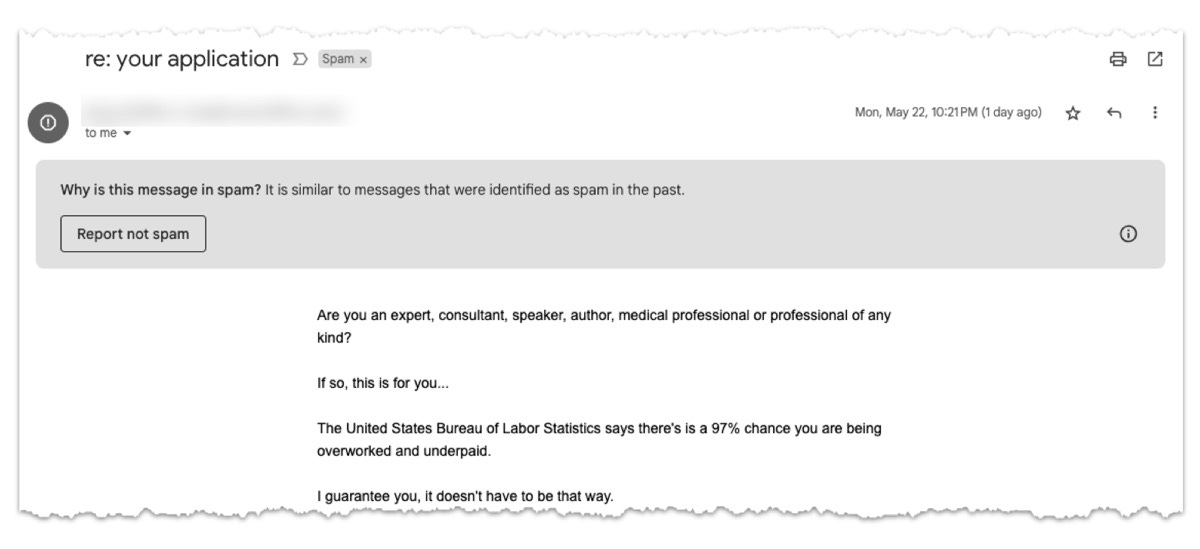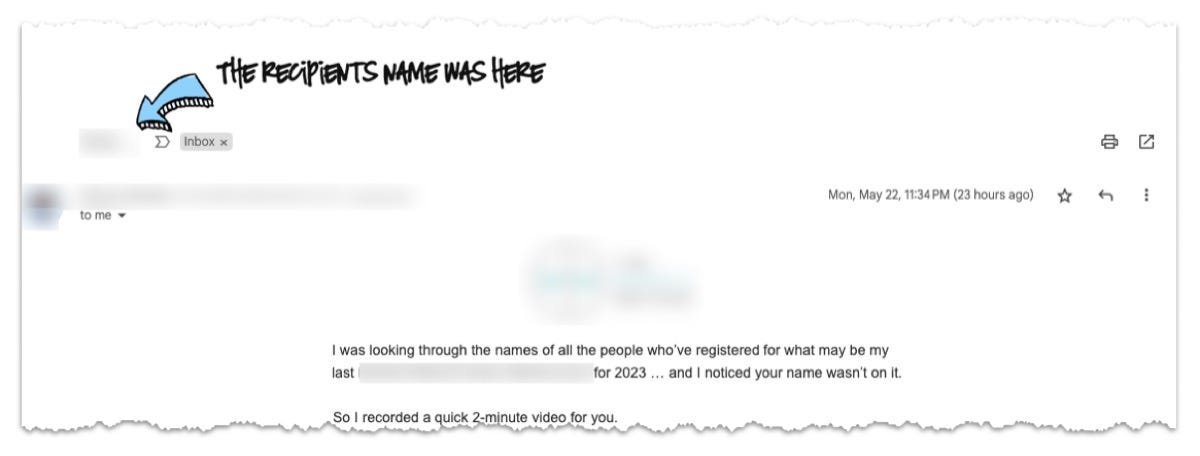Email "tricks" that make me mad
👉 please don't use these
Hey hey - Ian here.
I’m not normally a whinge-and-moan kind of person, but every now and then I’ll see something in the world of email marketing that makes me mad.
Luckily it also gives me the opportunity to call it out as a bad example so we can all avoid making the same mistakes.
Anyhoo - I spotted a couple in my inbox this morning. One is an obvious one you’ll have seen before. But the other might be a new one for you.
I’ve blurred out the senders and their branding as this is not about attacking individuals - it’s about highlighting practices I think you should avoid.
The first is an old chestnut: the “re:…” trick. In other words sending out a bulk email pretending it’s actually a reply. The idea being to trick recipients into opening it thinking you’re replying to something they sent or did.
In this case there’s a slight twist. It’s “re: your application”. So rather than tricking people into thinking it’s a reply to one of their emails, it’s tricking people into thinking it relates to something they’ve applied for.
Of course, they haven’t. The email is a pitch to get you to “apply”. And by “apply”, what that really means is you’ll end up on the end of a sales call.
Interestingly this email ended up in my spam folder. Probably because I haven’t opened any emails from this person for a long while. But I also like to think spam is exactly where this kind of email deserves to be.
Here’s another example:
This one I suspect may be more misguided than deliberately misleading.
The email has clearly been sent to the segment of people on this person’s list who hadn’t registered for his upcoming webinar to suggest they might want to. And that’s a very sensible thing to do.
What’s not so sensible is to pretend that you’re emailing them because you personally read through the list of webinar registrations and you care about them so much you noticed their particular name wasn’t on the list and then recorded a quick video just for them.
No. You tagged the people who registered and bulk-emailed everyone else.
The sender probably thought “It’ll be nice if I personalise the email to the recipient”. But to me it just waves a big trust red flag. It’s a lie.
Here’s the thing: these tricks most likely work. That’s why people keep using them.
Some people will be fooled. Others will spot the trickery and not care - or even chuckle at it. Others will spot it and be turned off.
But most likely enough people will buy to make it worthwhile economically to use these tricks. That’s why they keep being used.
But that doesn’t mean you should use them.
The senders probably justify using them by telling themselves that the products they’re selling as a result will really benefit the people who buy. So a little bit of chicanery to get them to open their emails or sign up is in their best interests anyway.
But that’s just BS. Just because you believe someone will benefit from your products doesn’t mean it’s OK to use trickery to get them to do so.
Now I’m not claiming to be some almighty arbiter of ethics or anything. I’m sure I do plenty wrong too.
But I do wish we’d stop using “clever tricks” like this in email marketing.
I think we’re better than that.
- Ian




